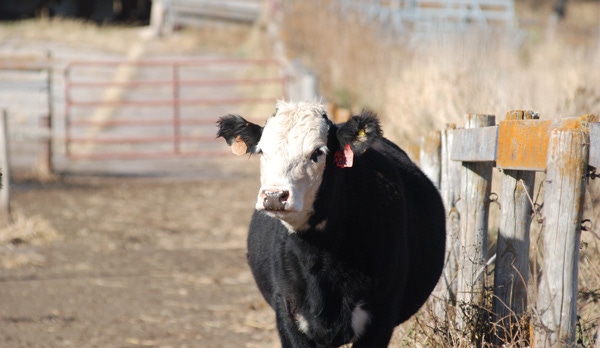October 10, 2014

I lost a 6-year-old cow this summer. She started to lose condition and was a couple of condition scores behind her herdmates when we put in the fly tags in early June. There was nothing really remarkable on a physical exam at that time, so we repeated the endectocide treatment from earlier in the year — thinking we may have missed her at turnout — and then kept an eye on her. She was still making lots of milk and her calf was doing well.
In late June, she took a sudden turn for the worse, displaying a significant jugular pulse with obvious abdominal discomfort and a low-grade fever. She was depressed, slow-moving, and produced a watery diarrhea. Initially thinking she might have hardware, I soon ended up performing a necropsy on her.
I found several large, pale masses intertwined with the intestines and the tissues between the intestines. There were multiple growths in her heart, especially in the smaller chambers (the atria). This explained the jugular pulse, which results from the heart not functioning properly.
I submitted samples for histological examination, which was consistent with bovine lymphosarcoma. To get refreshed on this disease, I went down the hall to Matt Miesner, our bovine internal medicine specialist in the Kansas State University College of Veterinary Medicine.
There are multiple forms of bovine lymphoma/lymphosarcoma (different names, same disease). The forms are classified by age of onset, location of the tumors and frequency of occurrence in a population.
There are three “sporadic” forms not considered to be associated with the bovine leukemia virus (BLV), although the virus occasionally may be detected in the lesions. These include:
The juvenile form that affects the lymph nodes,
The thymic form affecting the thymus in adolescent cattle (6 months to 3 years old),
The skin form that most commonly affects cattle 18 months to 3 years old.
Another form of the disease — enzootic bovine leukosis — took my cow. Caused by BLV in cattle usually at least 3 years of age, with peak occurrence between the ages of 4 and 8 years, clinical signs are absent in the majority of cows affected with the virus. If checked, about 30% will show persistent lymphocytosis (elevated white cell count in the blood). Only about 5% of cattle infected with BLV will show clinical signs associated with body systems such as the skin, viscera (associated with the abdominal organs, particularly the abomasum), heart or spinal cord.
We can detect infection by a blood titer, although there is some lag between infection and positive results. A late 1990s survey estimated that about 10% of beef cattle are infected by the virus, spread out through approximately 38% of the herds. There’s also a test available that looks directly for viral genetic material instead of the immune response to the virus.
High-risk activities for spread of the disease include dehorning, ear tagging, tattooing, injectable vaccines and rectal palpation. These practices can spread small amounts of blood between cattle, with as little as 1 microliter (1,000th of a cc) being able to spread the disease through contaminated white cells. In some herds (especially dairy), a new sleeve is used for each cow during preg-checking, and a new needle may be used on each cow, especially in high-value breeding stock. Horse flies are also thought to spread the disease.
The virus may be transferred in the womb as well. Transmission through breeding is possible, but the process of preparing semen for storage to be used in artificial insemination appears to be protective.
This was a brief overview of the disease which took No. 878 out of my herd. Your veterinarian is the source to help you further understand the disease, its transmission risks and associated regulatory issues, and how it may affect your herd.
Mike Apley, DVM, Ph.D., is a professor in clinical sciences at Kansas State University in Manhattan.
Other helpful resources:
2015 Cattle Market: Will It Be Strong Enough?
Should You Be Worried About Cattle Ingesting Net Wrap?
15 New Products From John Deere
Are You A Candidate For Cowherd Expansion?
Best Tips For Working Cattle In Cold Weather
About the Author(s)
You May Also Like



